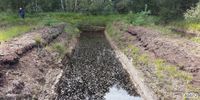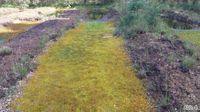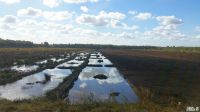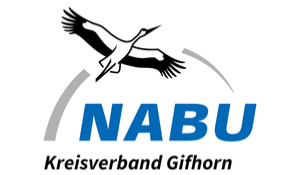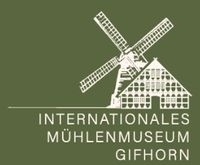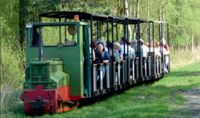Nothing ventured, nothing gained?
Learning how peat moss grows
Carefully planned and executed rewetting did not produce the envisaged success. Other areas of the moor, by contrast, developed magnificently – and did so without money or personnel from the conservation authorities. These included the small area in front of you. This are is one of the germ cells of our reorientation.
Initially, peat moss requires small areas of water that are protected from the wind. Rural peat diggings created pools which provided ideal conditions. Newly created test areas, based on the principle of the pools, provided new findings.
The peat moss in the different test pools developed very differently (Figs. 2, 3 and 4). Some pools showed no signs of the expected peat moss growth, not even 15 years after they were first created.
In 2001, an attempt with a replica pool at the former Arnoldshof site proved successful (Fig. 5). The concept pursued there allows the typical plant communities in our moor to become quickly and permanently established. Peat moss, cotton grass, sundew and other typical moorland plants grow there again. Since then, rewetting has been practised using this proven yet little developed “pool blueprint”.
A minor revolution for the purist doctrine of moorland conservation. Previously, the motto was “peat belongs in the moor.” Because of the special geographical location of our moor, it should have been “cut away all the peat to allow peat moss to grow.”
Maybe we will be able to find a solution for the reintroduction of the black grouse (Fig. 6).
Links to other stations in the museum - in English language:
<1> <2> <3> <4> <5> <6> <7> <8> <9> <10> <11> <12> <13> <14> <15> <16> <17> <18> <19> <20> <21> <22> <23>
